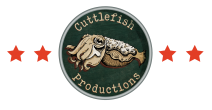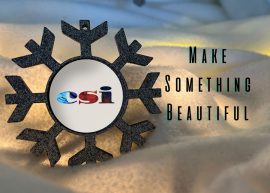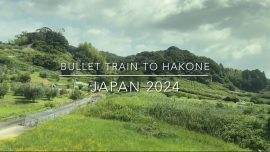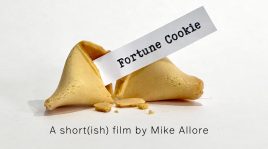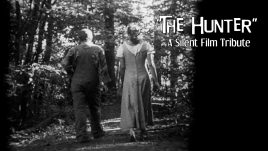A man and a woman are in a coffee shop. He wants to take their relationship to the next step.
How will she respond?
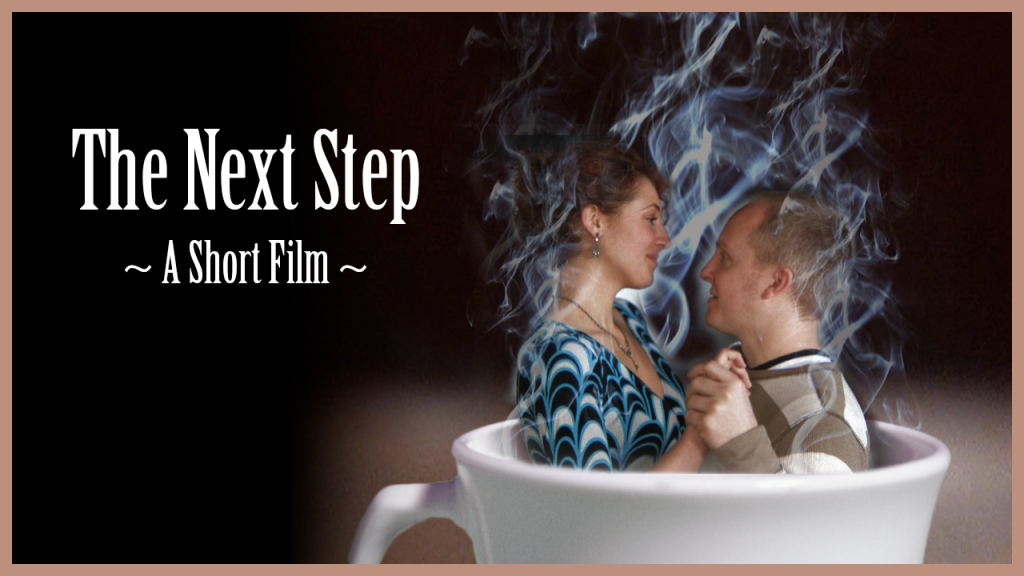
International and Domestic Film Festival Award winner.
First place winner of Best Narrative Film at the Broadcasters Educators Association Festival of Media Arts in Las Vegas.
The Next Step - Full Film
Idea & Pre-Production
My goal with this film was to keep simplicity in the story, and the complexities to be hidden in the details. Audiences are so good at predicting what may happen next in a story, I wanted to create a short film that stayed one step ahead of the viewer. A story that made the viewer wonder where the film was going, but didn’t abandon it for being too random. Plus, I wanted to keep the film under 10 minutes. After “Fortune Cookie” ran almost 45 minutes, I learned a lot regarding pacing. My second goal was to return to more visual storytelling and increase my work in visual effects.
The idea started with the location. It was a yearly tradition to go bowling with my family the day after Thanksgiving and I saw a friend I graduated high school with at the bowling alley. He mentioned he was opening a coffee shop in a small industrial building being renovated in town. He wasn’t going to be open until spring time, so it was an opportunity to have a completely closed set for filming.
With a good location available, I was working backwards when it came to creating a story. Normally the issue was having a script ready, then trying to find appropriate locations. I had focused on a dialogue driven film with “Fortune Cookie,” so I knew I didn’t want it to be just two people talking in a coffee shop.
Not being a coffee drinker, I had to do some research. I went into a coffee shop to see if anything struck me. I had just left from being at the dentist, so I first went into the bathroom to wash my hands. The small, windowless room was a bit like being locked in a closet. I wondered what I would do if there was gunfire in the coffee shop and I had nowhere to go. That feeling of survival being left to just the hope that the perpetrator doesn’t come to the door. I’m not one to put guns in a film just for the sake of creating tension, but it was a thought that brought some possibilities. The challenge with it was I also wanted the film to have a quirkiness to it.
When I left the coffee shop, I was meeting my family for dinner and to walk around downtown for the holiday events they had going on. By the time the downtown holiday lights were on, and we were ready to head home, I had the entire film concept in my head, including the music. A friend of mine named Jim Middleton was a pharmacist by day, animator by night. He also collected vintage Edison audio cylinders and transferred them to digital files to send out as animation challenges. A couple tracks he had transferred were perfect. I wrote the script very quickly, and wrote it with two actors in mind for the film; Kira Frabotta and Jeff Priskorn, who were both in “Fortune Cookie.” I was thankful they both loved the concept and agreed to be in the film.
While on vacation with my family that February, I would spend time storyboarding the dance sequence to the music while my son was napping, or anytime we were just relaxing by the pool. I came up with a few shots that I wasn’t exactly sure how to accomplish, namely the male lead getting his head put through a wall, and the female lead kicking a serving tray, sending a coffee mug through the air and breaking on his head. As with anything I come up for a film, I would figure it out later.
I learned a lot when making “Fortune Cookie,” but my biggest frustration was the un-cinematic look of it. I detested the “shot with a video camera” aesthetic. I needed this film to look like it was shot with cinema lenses. After doing extensive research, I decided on purchasing the SG Pro 35mm lens adapter for the camera. Using a rail system, the lens adapter would attach to the from of the video camera and a spinning mirror would hide the texture on the glass as you focused the camera on the image reflected from the lens attached to the adapter. It required more attention because there were two focus points to check, but the results were well worth it. I was finally able to get the look I wanted when I shot “Fortune Cookie.”
Production
Filming took place in March. I had one full day to film all the shots with the extras available to be patrons in the coffee shop. To make things more difficult, a late season snowstorm passed though that morning, being worse as you headed south of Richmond where we were filming. Kira was traveling from Dearborn, where the snow was much worse. It took longer for Kira to get to the location safely, so filming had to start later than scheduled.
To achieve the shot where Jeff’s head goes through the wall, my trusty set creator Rob Newman built a free standing wall frame with drywall that we painted the same color as the walls in the coffee shop. There was a ledge around the perimeter of the coffee shop that allowed us to set it on top of that ledge and secure it so we could still get behind the wall. When it was time to put Jeff’s head through the wall, we cut out a circle for his head to go through, and set the piece back into hole. He pushed the piece out with his head when he hit it. A grip stood behind the wall and pulled a pin that held a picture frame on the wall so it would fall when his head went through.
The coffee mug flying through the air and landing on Jeff’s head was going to be a bigger challenge. I knew what I wanted to shoot for background plates, but had no idea what I was going to do about getting a realistic coffee mug element into the shot. The first shot was Kira kicking an empty server tray, the second was a shot straight down from the ceiling as Kira and Jeff danced below, and the third was Jeff reacting to being hit in the head with the coffee mug.
Successfully getting all the shots with the extras late on the first day of filming went over the scheduled wrap time, but thankfully everyone stayed until all the shots needed were filmed.
On the second scheduled day of shooting, Kira had a head cold that caused some swelling in her face. Because Kira is one of the most stalwart talents I have worked with, and even with some swelling from irritated sinuses, she showed up and played her last dialogue like the professional she is. Even while dealing with her fingers sticking to the gun from the fake blood. There are many things I love about Kira’s talents, and because she is also a musician, she brings a musicality to her acting. And it top it all off, she is also a fan of the silent film era. She knows how to speak with her eyes. She appeared to come right through the lens when filming.
Watching Jeff fully immerse himself in his character was pure entertainment as well. He was vulnerable, confused, joyous, scared, frustrated, concerned, and humorous in various amounts from one moment to the next. It was everything and more that I had hoped for as his character was thrown through a bunch of emotions as the story unfolded. The physicality of the slapstick moments were played as an accepted part of this world, not over the top.
Post Production
Post production had an additional level of challenges that was very different from my other films. Not only did I have more visual effects shots to figure out how to accomplish, but after we wrapped filming in March, my daughter Cecelia was born the first week in April. My son, who was almost three years old, and a newborn are always the first priorities. So working on the editing and effects was squeezed in around family, teaching high school full time, and attending classes for my Masters Degree at Wayne State University. There were times that I would be up at night with Cecelia cradled in one arm, and editing the film with the other.
For the visual effects shots, it started fairly simple with the shot of Jeff’s head going through the wall. You could see the lines where the section of the wall was cut out before he put his head through. I painted over the lines of the pre-cut section so it looked like a solid wall until his head hit it. I added some dust elements, and the final result looked good.
The shot that had multiple “Kira and Jeffs” dancing, overlapping each other was a lot of time on one shot. I learned rotoscoping in After Effects, and at that time, it was a slow frame-by-frame process. The software wasn’t real good at following the pixels that moved. I also shot some dishes and plated falling into the frame on a green screen and added those.
But I was still worried about the high angle shot of the coffee cup flying up toward the camera, and back down before it hit Jeff in the head. I spoke to a student who had a brother working in 3D animation. I was thinking that was the route I would have to take. But I didn’t know how much it would cost, and how realistic it would end up looking. With young kids and tuition for my classes, I had a concern that I would spend extra money and have a result that the audience knew was a 3D model in the shot. In addition, there was no time. I had to get a finished film turned in for the Media Showcase and awards at Wayne State.
I had to figure out some kind of place-holder effect to put in for the flying coffee mug just to get it turned in, then work on the 3D element after the semester was over. So one night after getting home around 10:30pm from my class in Detroit, I set up a green screen on the floor of my garage and some lights. (I’m sure it looked like the light of God was shining out the garage windows to my neighbors) I took a coffee mug, filled it with dark cola (I’ve never been a coffee drinker), and tied a fishing line to the handle of the mug. With the camera pointed straight down on the top of the mug, I recorded it as I jiggled the fishing line to cause the liquid to move and change reflection in the lights. I took that shot into After Effects, keyed it out, and animated it getting larger in the frame and then smaller as it followed the shot. It still didn’t look right, so I added a spin to it. After watching it, I was honestly pretty impressed with the final result. It fit so well, I left it as the final composited shot. I never pursued a 3D animated replacement.
“The Next Step” went on to take the top honor at the showcase, and have great showings at festivals, winning some awards. It was also garnered attention internationally, as it won the Forester Film Festival in Australia. It even toured multiple cities in Australia with a film showcase around the country.

